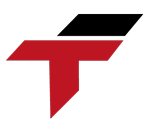As Malaysian manufacturers embrace Industry 4.0, efficient human–machine interaction has become more critical than ever. The Operator Interface Terminal (OIT) serves as a vital component that bridges human operators with automated machinery. It enables real-time control, monitoring, and data management – the core of a connected and intelligent production environment.
In this article, we’ll explore what an OIT is, how it functions, and why it plays a crucial role in Malaysia’s transformation toward smart manufacturing.
What Is an Operator Interface Terminal (OIT)?
An Operator Interface Terminal (OIT) is a compact human-machine interface (HMI) device that allows operators to interact directly with industrial control systems. It displays essential process data, enables command inputs, and provides status updates on machinery and equipment.
Unlike full-scale HMIs that may run advanced graphical software or SCADA systems, OITs are streamlined for specific functions – typically featuring touchscreen displays, programmable function keys, and simplified interfaces.
They are designed for frontline industrial control, ideal for PLC-driven environments where reliability and responsiveness matter most.
How OIT Works in Automation Systems?
OITs operate as the communication bridge between humans and programmable logic controllers (PLCs). Through input/output operations, the terminal sends operator commands to the PLC and retrieves real-time data from sensors, motors, and production lines.
Typical components include a touchscreen display, function keys, and communication ports (Ethernet, RS232, USB). Data visualization tools convert raw data into readable graphs, alarms, and performance metrics.
Components and Architecture of Operator Interface Terminals
Operator Interface Terminals combine both hardware and software elements to enable seamless interaction between operators and industrial machines. Understanding their architecture helps engineers design efficient, reliable, and connected automation systems for modern manufacturing environments.
Hardware Components
The hardware of an OIT consists of:
- CPU and memory module for processing control data
- Display and touch panel (LCD/TFT) for real-time visualization
- Communication ports such as Ethernet, RS232, RS485, and USB for device connectivity
Industrial-grade OITs are built for durability, with IP-rated casings that resist dust, humidity, and vibration, ensuring long life in factory conditions.
Software and Communication Protocols
OITs are programmed using specialized software platforms such as:
- Siemens WinCC
- Allen-Bradley FactoryTalk
- Mitsubishi GT Works
- Omron CX-Designer
To ensure seamless communication, they support industry-standard protocols such as Modbus, Ethernet/IP, OPC UA, and Profibus, enabling integration with PLCs, HMIs, and SCADA systems across multi-vendor environments.
Components and Architecture of Operator Interface Terminals
Key Functions and Capabilities
- Real-Time Data Monitoring: OITs provide live visibility into plant operations, showing temperature, speed, pressure, and other process variables. Alarm management systems alert operators to abnormalities instantly, allowing faster response and minimal downtime.
- Control and Command Operations: Operators can start or stop machines, adjust process parameters, and perform manual overrides directly through the OIT screen. This centralized control interface enhances operational safety and efficiency across production lines.
- Data Logging and Connectivity: Modern OITs are equipped with data logging functions to record production data, generate reports, and connect to SCADA or cloud platforms for remote analysis. This feature supports traceability, OEE improvement, and predictive maintenance efforts.
Applications of Operator Interface Terminals in Malaysia
- Manufacturing and Assembly Lines: OITs enable seamless automation. They provide operators with quick access to machine settings and real-time insights, improving output consistency and reducing waste.
- Food and Beverage Industry: OITs help maintain strict hygiene standards by enabling precise temperature and process control. They also assist in monitoring packaging lines, ensuring compliance with safety regulations.
- Logistics and Warehousing: OITs are integrated with conveyors, ASRS, and robotics to manage movement, track inventory, and streamline order fulfillment. This digital coordination is key to achieving high-speed, error-free warehousing operations.
Benefits of Using Operator Interface Terminals
- Improved Productivity and Process Visibility: By consolidating control and data monitoring in one interface, OITs simplify workflows and reduce human error. This results in higher equipment uptime, faster troubleshooting, and better OEE (Overall Equipment Effectiveness).
- Enhanced Safety and Maintenance: Features such as role-based access, alarm notifications, and system diagnostics strengthen safety and maintenance routines. Predictive maintenance insights help detect early signs of equipment failure, preventing costly downtime.
- Scalability for Industry 4.0: OITs are ready for the next stage of industrial evolution integrating with IoT platforms, cloud dashboards, and AI-based analytics. This scalability supports Malaysia’s drive toward smart factory transformation and digital manufacturing ecosystems.
Benefits of Using Operator Interface Terminals
Integration with Other Industrial Systems
Operator Interface Terminals play a crucial role in unifying factory communication networks. By integrating with PLCs, SCADA, and MES systems, OITs enable synchronized data flow, real-time monitoring, and centralized control.
Connecting OIT with PLCs, SCADA, and MES
OITs integrate seamlessly into larger control architectures, connecting with PLCs, SCADA systems, and Manufacturing Execution Systems (MES) for unified data exchange. This integration boosts process transparency and operational coordination.
OIT and Industrial Networking
Using Ethernet/IP, Profinet, or Modbus TCP, OITs ensure reliable communication between machines and supervisory systems. These real-time networks enable faster decision-making and smoother data flow across connected devices.
Conclusion
Operator Interface Terminals are vital components in Malaysia’s journey toward smart and connected manufacturing. By bridging the gap between operators and machines, OITs enhance visibility, control, and efficiency across production lines. Their seamless integration with PLCs, SCADA, and MES systems enables real-time data exchange and informed decision-making.
As Industry 4.0 continues to shape Malaysia’s industrial landscape, investing in modern OIT solutions ensures long-term competitiveness, improved productivity, and operational safety. Choosing reliable partners and future-ready technologies will empower manufacturers to achieve sustainable growth in the era of intelligent automation.


